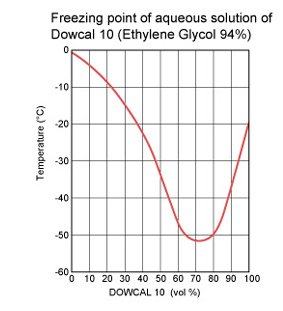Hi, I've spent a lot of time looking at using mineral oil submersion and was wondering about any personal experiences with oil submersion as well as random (constructive criticism is what is desired) thoughts.
I am planning to submerge my components (minus drives with mobile parts) in a mineral oil bath (5-8 gallons) and pump oil from the top 3 inches of the tank through an enclosure surrounding the evaporator on a window AC unit. The return line will eject the cooled oil (T=0-10C) on or near the CPU heatsink which is a large Zalman (CNPS10X).
-I hope to keep the mean temp of the bath at ambient to begin with (condensation concerns)
-I know oil is messy (swapping 85 gal of oil out of 3-4 tractors (that's 85 gal each) every spring will teach anyone this lesson)
-I have plans to seal the output ports on the back of the MB and cards (silicone)so that my devices don't wick oil through their cords (I refuse to go wireless)
-AC unit is supposed to be capable of moving 1.1 kW of heat and testing of a single pump in the room temp oil with 10ft of 3/4 ID vinyl suggests that the pump will be capable of moving enough oil to transfer 1.1 kW with less than 15C drop on the oil temp after considering that the colder oil will reduce flow rate and increase head losses in the return.
-Only thing I am not sure about is that Tom's Hardware claimed that sealing the cpu from the oil is necessary since it causes capacitance changes between the pins but I theorize that they had a small dielectric breakdown due to the small distance between pins and the fact that they used vegetable oil which has extraneous compounds that I'm certain could cause a small degree of dielectric breakdown. (I do understand the change in capacitance theory, I made water level sensors based on the fact that water replacing air between the plates changes capacitance. They had a nice linear response but got scrambled by my homemade AC solenoid valve in the final assembly :{)
-I would like to know if any of you have done both mineral and veg. oil and if my dielectric breakdown (due to veg. oil's extraneous compounds) theory is plausible. Also maybe those extraneous compounds had some heavy dipoles that resisted when electrical currents changed in the pins (not a capacitance change but an inductance change, crackpot theory???)
-I would have added peltiers to this project but the fact that they can compound the heat rejection by large amounts, i.e. to move 100W at a decent dT you will most likely need to create at least 50W through the peltier and now the hot side must reject 150W (as well as the high current requirements of a peltier). I do understand that higher dTs require larger power additions through the peltier.
I may add more later but this should be most of the thoughts for now.....
I am planning to submerge my components (minus drives with mobile parts) in a mineral oil bath (5-8 gallons) and pump oil from the top 3 inches of the tank through an enclosure surrounding the evaporator on a window AC unit. The return line will eject the cooled oil (T=0-10C) on or near the CPU heatsink which is a large Zalman (CNPS10X).
-I hope to keep the mean temp of the bath at ambient to begin with (condensation concerns)
-I know oil is messy (swapping 85 gal of oil out of 3-4 tractors (that's 85 gal each) every spring will teach anyone this lesson)
-I have plans to seal the output ports on the back of the MB and cards (silicone)so that my devices don't wick oil through their cords (I refuse to go wireless)
-AC unit is supposed to be capable of moving 1.1 kW of heat and testing of a single pump in the room temp oil with 10ft of 3/4 ID vinyl suggests that the pump will be capable of moving enough oil to transfer 1.1 kW with less than 15C drop on the oil temp after considering that the colder oil will reduce flow rate and increase head losses in the return.
-Only thing I am not sure about is that Tom's Hardware claimed that sealing the cpu from the oil is necessary since it causes capacitance changes between the pins but I theorize that they had a small dielectric breakdown due to the small distance between pins and the fact that they used vegetable oil which has extraneous compounds that I'm certain could cause a small degree of dielectric breakdown. (I do understand the change in capacitance theory, I made water level sensors based on the fact that water replacing air between the plates changes capacitance. They had a nice linear response but got scrambled by my homemade AC solenoid valve in the final assembly :{)
-I would like to know if any of you have done both mineral and veg. oil and if my dielectric breakdown (due to veg. oil's extraneous compounds) theory is plausible. Also maybe those extraneous compounds had some heavy dipoles that resisted when electrical currents changed in the pins (not a capacitance change but an inductance change, crackpot theory???)
-I would have added peltiers to this project but the fact that they can compound the heat rejection by large amounts, i.e. to move 100W at a decent dT you will most likely need to create at least 50W through the peltier and now the hot side must reject 150W (as well as the high current requirements of a peltier). I do understand that higher dTs require larger power additions through the peltier.
I may add more later but this should be most of the thoughts for now.....

